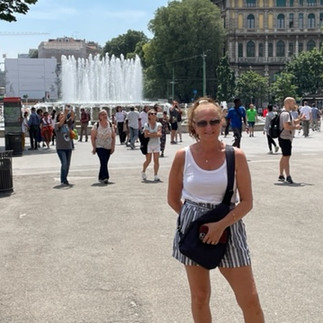Castello di Milano
- Maria Scuor
- Jun 18, 2022
- 2 min read
Updated: Aug 22, 2022

History of this castello dates back to 1358 when Galeazzo II a member of the Visconti dynasty and a ruler of Milan, ordered the original construction and was knows as Castello di Porta Giova. The castle was the the main residence in the city of its Visconti lords, and was destroyed by the short-lived Golden Ambrosian Republic which ousted them in 1447.
Today's Castello di Milano, also known as Castello Sforzesco, is a medieval fortification which was built in the 15th century by Francesco Sforza, the Duke of Milano. Numerous artists were called upon to decorate the castello, including Leonardo da Vinci (who frescoed several rooms, in collaboration with Bernardino Zenale and Bernardino Butinone). Leonardo worked at the ceiling of the Sala delle Asse, painting decorations of vegetable motifs. Sadly this castello was damaged by assaults from Italian, French and German troops.
By the 16th and 17th centuries, the Castello was renovated and enlarged and became one of the largest fortresses in Europe. However it wasn't until Luca Beltrami, an Italian architect and architectural historian known for his restoration projects, rebuilt the property between 1891 - 1905 that it became what it is today. It now holds several of Milano's museums and art collections.
The Castello Sforzesco complex includes the following museums :
The Pinacoteca del Castello Sforzesco, with an art collection which includes Andrea Mantegna's Trivulzio Madonna and masterpieces by Canaletto, Tiepolo, Vincenzo Foppa, Titian and Tintoretto
The Museum of Ancient Art which includes the armory, the tapestry room and some funerary monuments
The Museum of Musical Instruments
The Egyptian Museum
The Prehistoric collections of the Archaeological Museum of Milan
Applied Arts Collection
The Antique Furniture & Wooden Sculpture Museum
The Achille Bertarelli Print Collection
The Museum of the Rondanini Pietà which includes Michelangelo's last sculpture (the Rondanini Pietà)
The Biblioteca Trivulziana holds a manuscript by Leonardo da Vinci, the Codex Trivulzianus. In 2012, new paintings attributed to Michelangelo Merisi da Caravaggio were discovered at the castle. We didn't visit any of the museums as the lineups were incredible. But here are photo's of the castello we took:














































Commentaires